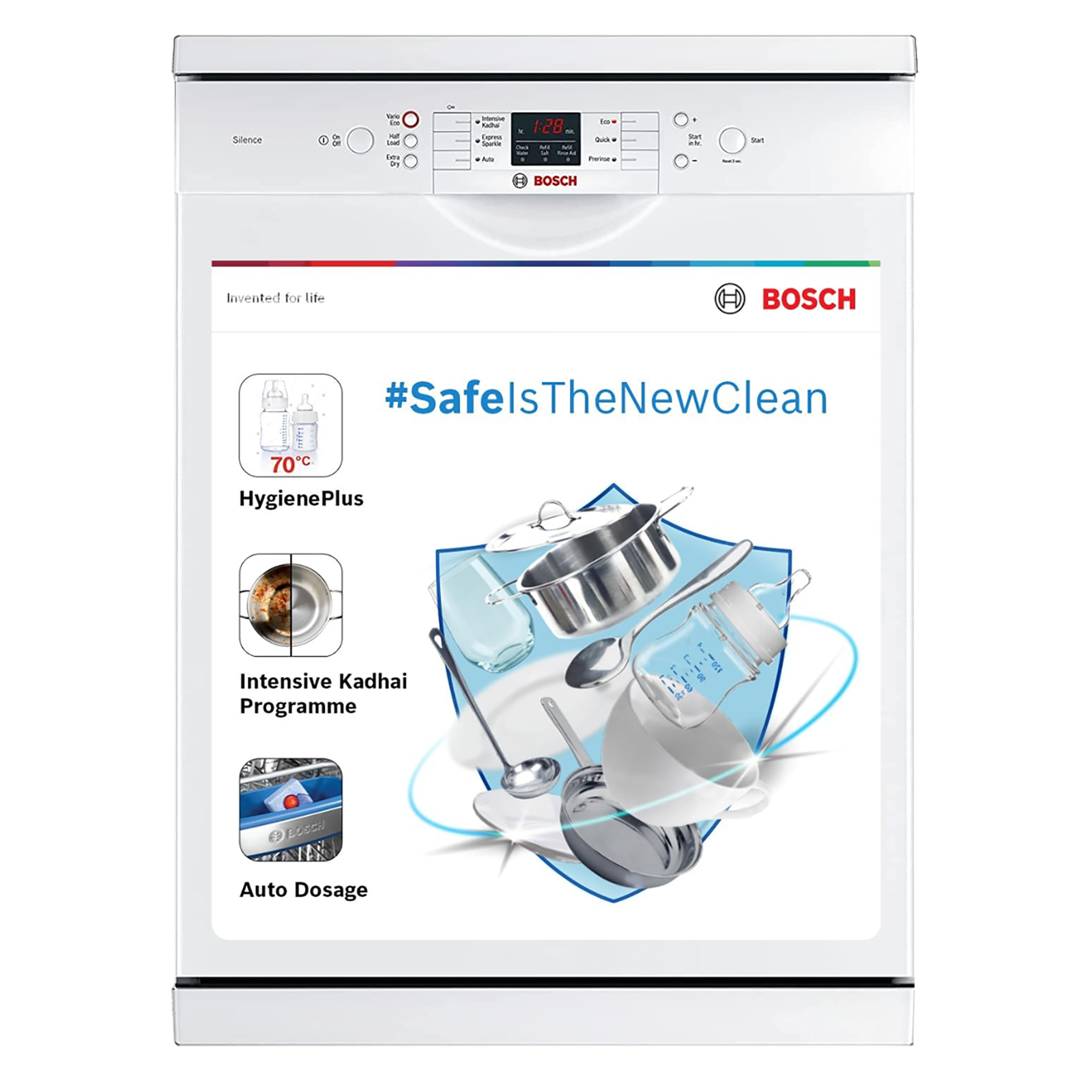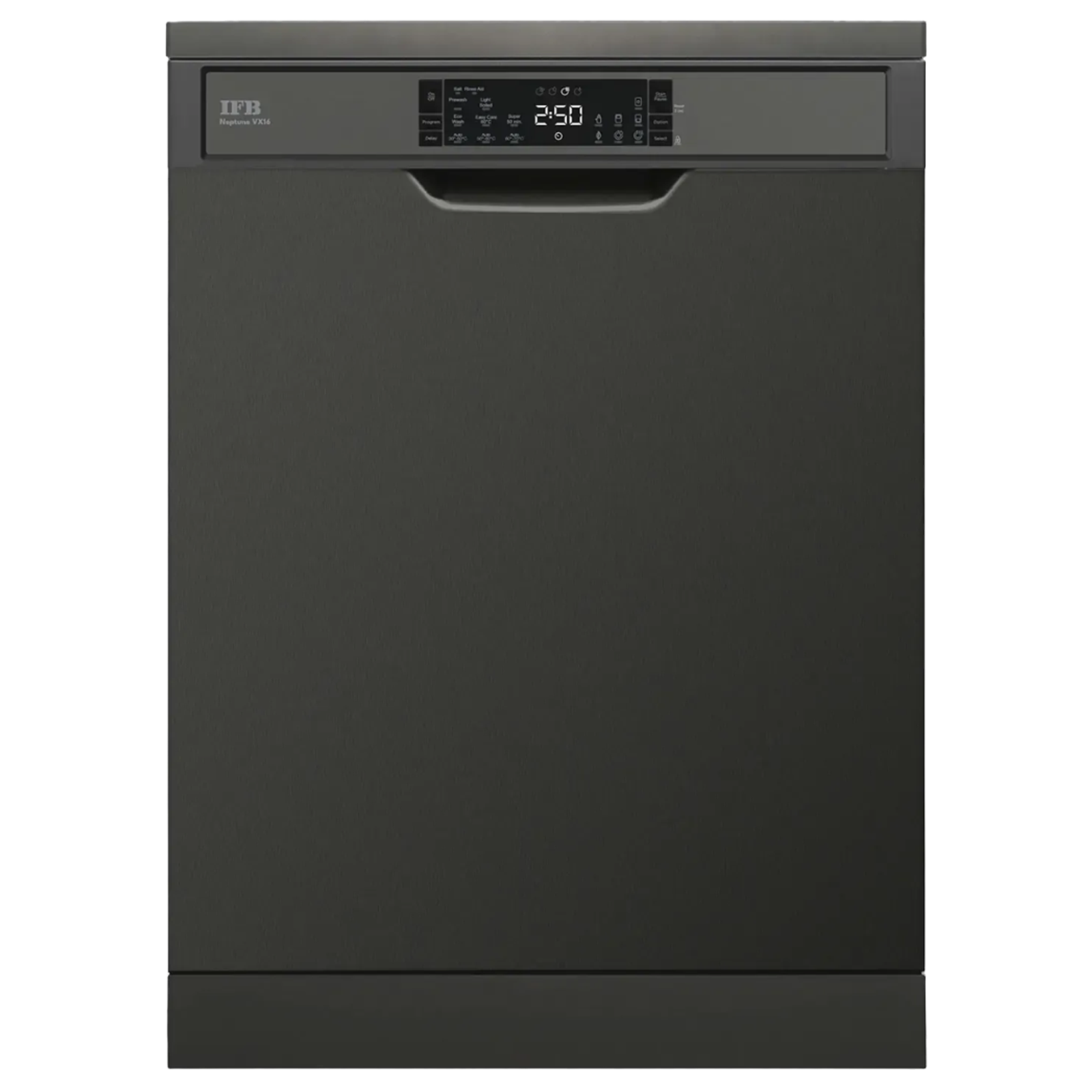Dishwasher is one of the many innovative appliances that has completely transformed kitchen tasks. For many people, the biggest challenge in the kitchen is to clean all the dishes and utensils, and with dishwashers, you are essentially offloading that chore to a machine that not only does this work effectively but also does it efficiently. If you are planning to bring a dishwasher into your kitchen, you might be wondering how it works. Let’s find out.
Dishwashers: A step-by-step guide to their workings
Before we get to how a dishwasher works, it is important to note that a dishwasher not only makes kitchen tasks easier, it has been found that a dishwasher uses less water than hand washing thanks to clever engineering.
ALSO READ: 5 best dishwashers in India of 2024
While you might think that a dishwasher works by simply loading your dirty dishes and starting the machine, there is more nuance to it.
Here is a step-by-step look at how a kitchen appliance like a dishwasher works:
1. Loading and pre-rinsing
2. Water entry and heating
3. Detergent dispensing
4. Washing and rinsing
5. Draining
6. Drying
7. End of the wash cycle
The way a dishwasher works is a combination of engineering and chemistry that not only aims to make your dishes cleaner but also does that by consuming less water and energy. Let’s look at each step deployed by a dishwasher in chronological order:
1. Loading and pre-rinsing
The first step is loading the dirty dishes into racks designed carefully to optimise water flow and thorough cleaning. However, before you load the dirty dishes, it would be a wise choice to scrape off excess food particles from your dishes. Some dishwasher models also include a pre-rinse function, which sprays water on dirty dishes before the main wash cycle and it loosens stubborn stains.
2. Water entry and heating
Once the dishes are loaded, the dishwasher door is closed and the wash cycle is initiated, the primary step begins by filling the dishwasher’s tub with water. This water is then heated to an optimal temperature and heating helps dissolve detergent and break down grease and grime on the dishes.
3. Detergent dispensing
Once the water reaches the desired temperature, the detergent is dispensed into the dishwasher. Depending on your dishwasher model, you may have separate compartments for detergent and specialised detergents for different types of load. Once dispensed, the detergent mixes with the hot water to form a cleaning solution that effectively removes stains and food residues.
4. Washing and rinsing
The main wash cycle begins only after the detergent is dispensed. This involves water being propelled by a pump and sprayed onto the dishes from jets placed at a strategic location within the machine. The dishwasher relies on the force of the water and detergent solution to dislodge and remove food particles from the surface of the dishes. You can also choose from multiple wash and rinse cycles for thorough cleaning.
5. Draining
Once the washing and rinsing are done, the dirty water is drained from the dishwasher tub where a filter is used to catch large food items, preventing clogging of the drainage system. This drained water is then pumped out of the dishwasher and the machine is ready for the next wash cycle.
6. Drying
Once the water is drained and the dishes are cleaned, the next step is to dry them. Dishwashers use different methods to dry dishes with some employing heating to remove excess water while others rely on circulating air to support the drying process.
ALSO READ: How to clean a dishwasher the right way
If your dishwasher has a rinse aid then it is used during this process to speed up drying and prevent water spots on dishes.
7. End of the wash cycle
The dishwasher cycle comes to an end once the dishes are clean and dry and it is usually indicated with the help of lights and indicators on the dishwasher. Once finished, the clean dishes can be unloaded and your machine will be ready for the next wash cycle.
While these steps may seem straightforward, the optimum usage and experience depend on how well you prepare the machine for the wash cycle. It is recommended that you scrape off excess food from the dishes and load them properly. You should also choose a detergent suitable for the dishwasher and select an appropriate wash cycle. With regular maintenance, you can ensure that your dishwasher works well and cleans your dishes thoroughly and efficiently.
Unleash your inner geek with Croma Unboxed
Subscribe now to stay ahead with the latest articles and updates
You are almost there
Enter your details to subscribe

Happiness unboxed!
Thank you for subscribing to our blog.
Disclaimer: This post as well as the layout and design on this website are protected under Indian intellectual property laws, including the Copyright Act, 1957 and the Trade Marks Act, 1999 and is the property of Infiniti Retail Limited (Croma). Using, copying (in full or in part), adapting or altering this post or any other material from Croma’s website is expressly prohibited without prior written permission from Croma. For permission to use the content on the Croma’s website, please connect on contactunboxed@croma.com
- Related articles
- Popular articles




















Karthekayan Iyer
Comments